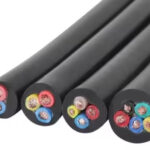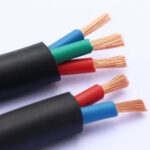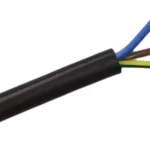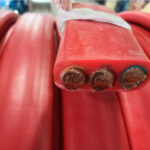Shielded Twisted Pair (STP) cable is a type of network cable that features pairs of insulated copper wires twisted together and enclosed in a protective shield. This shielding helps block electromagnetic interference (EMI) and crosstalk, making STP cables ideal for high-speed data transmission in environments with electrical noise.
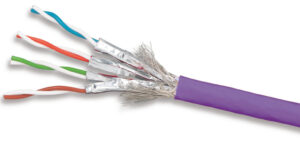
what is shielded twisted pair cable
How Does a Shielded Twisted Pair Cable Work?
STP cables consist of multiple twisted pairs of copper wires, where each pair transmits data signals. These pairs are individually or collectively wrapped in a metallic shielding layer, such as foil or braided mesh, which serves to:
Minimize external EMI from nearby equipment or power lines
Reduce internal crosstalk between adjacent wire pairs
Improve signal quality and reliability, especially over long distances or high frequencies
Types of Shielded Twisted Pair (STP) Cable
STP cables are categorized based on the type of shielding used:
| Cable Type | Description |
|---|---|
| FTP (Foiled Twisted Pair) | Overall foil shield around all wire pairs |
| S/FTP (Shielded Foiled Twisted Pair) | Braided shield + individual foil shielding on each pair |
| F/UTP (Foiled Unshielded Twisted Pair) | Foil shield around entire cable, unshielded pairs |
| U/FTP (Unshielded with Foiled Pairs) | Each twisted pair has foil shielding, but no outer shield |
| STP (generic) | General term for any twisted pair cable with shielding |
These variations are defined under international standards such as ISO/IEC 11801.
STP vs UTP: What’s the Difference?
Many users ask: “What’s the difference between STP and UTP cable?”
| Feature | STP Cable | UTP Cable |
|---|---|---|
| Shielding | Yes | No |
| EMI Protection | High | Low |
| Crosstalk Resistance | Better | Moderate |
| Installation Complexity | Higher (requires grounding) | Easier |
| Cost | More expensive | More affordable |
| Best For | Industrial, high-interference environments | Standard office or home networks |
🧠 Key takeaway: STP is better for electrically noisy environments like factories, data centers, and hospitals.
Common Applications of STP Cables
STP cables are widely used in:
Ethernet networks (Cat5e, Cat6a, Cat7 STP variants)
Data centers
Telecommunication systems
Medical equipment rooms
Industrial automation
Audio/visual setups
They’re especially effective where multiple cables run in close proximity or near power lines and large machinery.
Advantages of Shielded Twisted Pair Cable
✅ Superior EMI protection
✅ Better signal quality over long distances
✅ Reduced data errors and retransmissions
✅ Increased network reliability in high-speed communication
Disadvantages
❌ Higher cost than UTP cables
❌ Requires proper grounding to avoid signal reflection
❌ Thicker and less flexible, making it harder to install
❌ More difficult termination process
Installation Tips for STP Cable
To ensure STP cable performs as intended:
Always ground the shielding at one end (or as specified by local codes)
Use shielded connectors and patch panels
Avoid sharp bends and cable kinks
Keep separation between STP and power cables to reduce coupling
Frequently Asked Questions
What is STP cable used for?
STP cables are used in environments with high electromagnetic interference, such as industrial areas, data centers, and places with a lot of electrical equipment.
Is STP faster than UTP?
Not necessarily. STP and UTP can support the same data rates (e.g., 1 Gbps, 10 Gbps), but STP provides more stable performance in electrically noisy environments.
Does STP require special connectors?
Yes. To maintain shielding continuity, use shielded RJ45 connectors and properly grounded network equipment.
Conclusion
Shielded Twisted Pair cable offers enhanced protection against interference, making it a smart choice for mission-critical or noise-prone environments. While it may cost more and require careful installation, the improved signal integrity and network reliability often justify the investment.
Considering upgrading to STP in your network? Evaluate your environment first—if you're dealing with EMI, it's likely the right choice.

